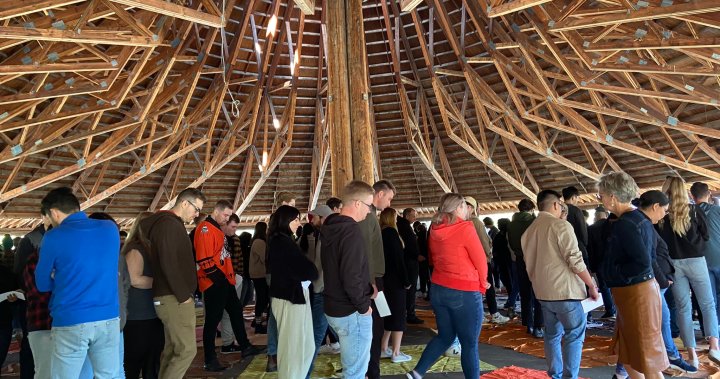
University of Alberta law students take steps towards reconciliation
Global News
First year University of Alberta Law students took part in a blanket exercise to learn about the relationship between Indigenous people and the state.
Tyler Ermineskin from Ermineskin Cree Nation said he is the first person in his family to get a degree and go to law school. But there was a time he didn’t think it would be possible.
“Our people used to never be able to practice law, we weren’t accepted into law schools,” Ermineskin said. “We were never allowed to get degrees. When we had legal issues we had to fight, we were never able to have legal matters represented in court.
It was a moving moment for him on Monday when the University of Alberta facilitated a blanket exercise in Enoch Cree Nation for first-year law students. One-hundred-and-eighty of Ermineskin’s peers took part in the exercise.
“A lot of this stuff affects me today… my family, my mosom, my kokum went to residential school,” Ermineskin said. “My mom was affected by Bill C-92 and a lot of my family has been affected by the child welfare system.”
Students walked through five centuries of post-contact history. The blanket exercise was adapted to show how Canadian law has affected the relationship between Indigenous people and the state.
As students moved through the exercise and the history of colonization, blankets were removed to demonstrate the forcible loss of land by Europeans. The blankets also represented imposed disease, residential schools, violence and death that has impacted Indigenous communities.
“When you’re sitting in a classroom and watching a slide, it’s really easy to disassociate, but here you’re speaking, you’re acting and you’re walking around, you’re seeing,” said Wahkohtowin’s Koren Lightning-Earle, a faculty of law professor at the University of Alberta. “There is no way you’re not engaged in the material.
Lightning-Earle said there has been a shift since she went to law school in 2007. She noted there is now more focus on Indigenous issues.





















 Run 3 Space | Play Space Running Game
Run 3 Space | Play Space Running Game Traffic Jam 3D | Online Racing Game
Traffic Jam 3D | Online Racing Game Duck Hunt | Play Old Classic Game
Duck Hunt | Play Old Classic Game











